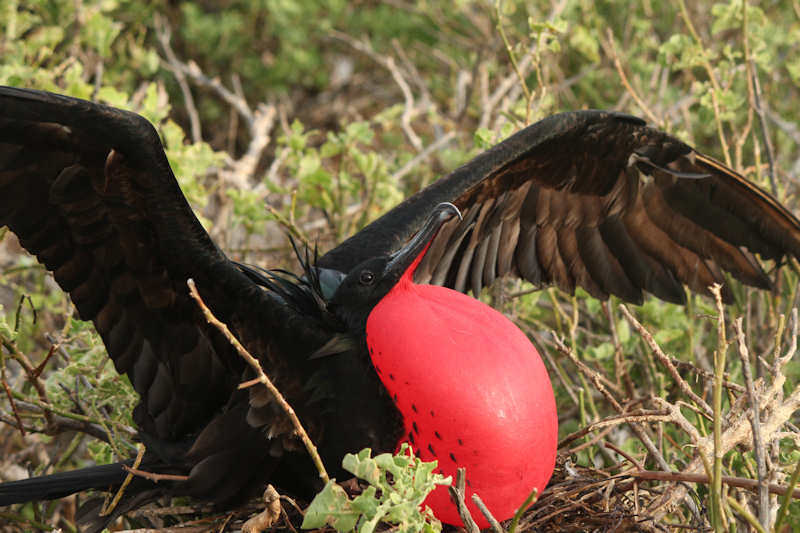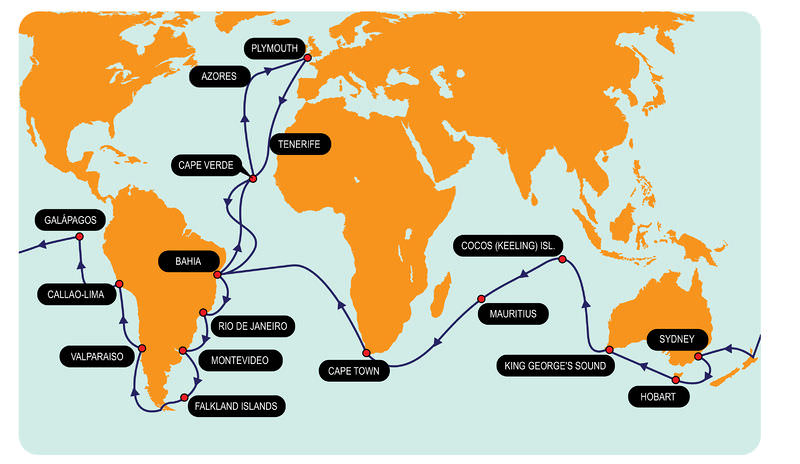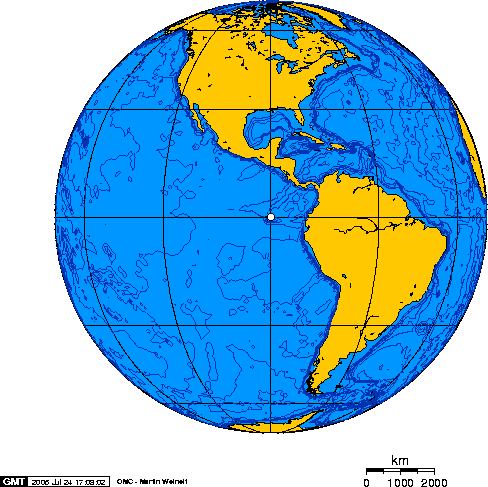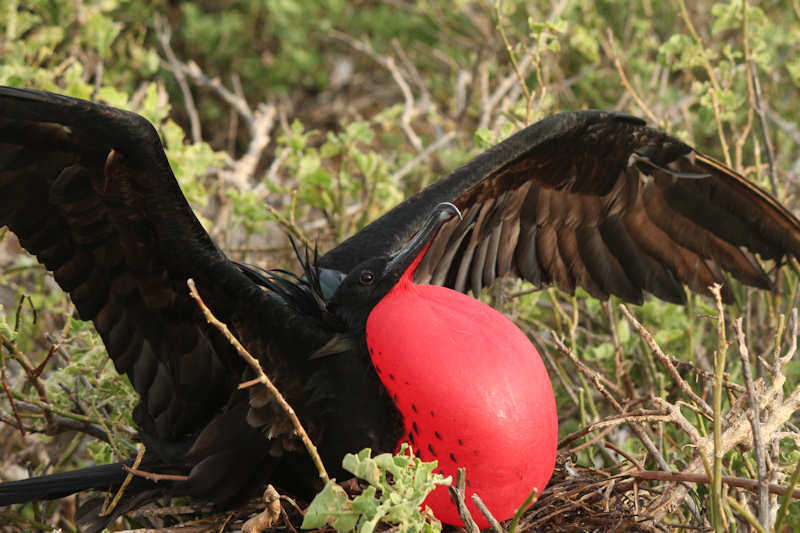5.3: Darwin
- Page ID
- 12105
\( \newcommand{\vecs}[1]{\overset { \scriptstyle \rightharpoonup} {\mathbf{#1}} } \)
\( \newcommand{\vecd}[1]{\overset{-\!-\!\rightharpoonup}{\vphantom{a}\smash {#1}}} \)
\( \newcommand{\dsum}{\displaystyle\sum\limits} \)
\( \newcommand{\dint}{\displaystyle\int\limits} \)
\( \newcommand{\dlim}{\displaystyle\lim\limits} \)
\( \newcommand{\id}{\mathrm{id}}\) \( \newcommand{\Span}{\mathrm{span}}\)
( \newcommand{\kernel}{\mathrm{null}\,}\) \( \newcommand{\range}{\mathrm{range}\,}\)
\( \newcommand{\RealPart}{\mathrm{Re}}\) \( \newcommand{\ImaginaryPart}{\mathrm{Im}}\)
\( \newcommand{\Argument}{\mathrm{Arg}}\) \( \newcommand{\norm}[1]{\| #1 \|}\)
\( \newcommand{\inner}[2]{\langle #1, #2 \rangle}\)
\( \newcommand{\Span}{\mathrm{span}}\)
\( \newcommand{\id}{\mathrm{id}}\)
\( \newcommand{\Span}{\mathrm{span}}\)
\( \newcommand{\kernel}{\mathrm{null}\,}\)
\( \newcommand{\range}{\mathrm{range}\,}\)
\( \newcommand{\RealPart}{\mathrm{Re}}\)
\( \newcommand{\ImaginaryPart}{\mathrm{Im}}\)
\( \newcommand{\Argument}{\mathrm{Arg}}\)
\( \newcommand{\norm}[1]{\| #1 \|}\)
\( \newcommand{\inner}[2]{\langle #1, #2 \rangle}\)
\( \newcommand{\Span}{\mathrm{span}}\) \( \newcommand{\AA}{\unicode[.8,0]{x212B}}\)
\( \newcommand{\vectorA}[1]{\vec{#1}} % arrow\)
\( \newcommand{\vectorAt}[1]{\vec{\text{#1}}} % arrow\)
\( \newcommand{\vectorB}[1]{\overset { \scriptstyle \rightharpoonup} {\mathbf{#1}} } \)
\( \newcommand{\vectorC}[1]{\textbf{#1}} \)
\( \newcommand{\vectorD}[1]{\overrightarrow{#1}} \)
\( \newcommand{\vectorDt}[1]{\overrightarrow{\text{#1}}} \)
\( \newcommand{\vectE}[1]{\overset{-\!-\!\rightharpoonup}{\vphantom{a}\smash{\mathbf {#1}}}} \)
\( \newcommand{\vecs}[1]{\overset { \scriptstyle \rightharpoonup} {\mathbf{#1}} } \)
\( \newcommand{\vecd}[1]{\overset{-\!-\!\rightharpoonup}{\vphantom{a}\smash {#1}}} \)
\(\newcommand{\avec}{\mathbf a}\) \(\newcommand{\bvec}{\mathbf b}\) \(\newcommand{\cvec}{\mathbf c}\) \(\newcommand{\dvec}{\mathbf d}\) \(\newcommand{\dtil}{\widetilde{\mathbf d}}\) \(\newcommand{\evec}{\mathbf e}\) \(\newcommand{\fvec}{\mathbf f}\) \(\newcommand{\nvec}{\mathbf n}\) \(\newcommand{\pvec}{\mathbf p}\) \(\newcommand{\qvec}{\mathbf q}\) \(\newcommand{\svec}{\mathbf s}\) \(\newcommand{\tvec}{\mathbf t}\) \(\newcommand{\uvec}{\mathbf u}\) \(\newcommand{\vvec}{\mathbf v}\) \(\newcommand{\wvec}{\mathbf w}\) \(\newcommand{\xvec}{\mathbf x}\) \(\newcommand{\yvec}{\mathbf y}\) \(\newcommand{\zvec}{\mathbf z}\) \(\newcommand{\rvec}{\mathbf r}\) \(\newcommand{\mvec}{\mathbf m}\) \(\newcommand{\zerovec}{\mathbf 0}\) \(\newcommand{\onevec}{\mathbf 1}\) \(\newcommand{\real}{\mathbb R}\) \(\newcommand{\twovec}[2]{\left[\begin{array}{r}#1 \\ #2 \end{array}\right]}\) \(\newcommand{\ctwovec}[2]{\left[\begin{array}{c}#1 \\ #2 \end{array}\right]}\) \(\newcommand{\threevec}[3]{\left[\begin{array}{r}#1 \\ #2 \\ #3 \end{array}\right]}\) \(\newcommand{\cthreevec}[3]{\left[\begin{array}{c}#1 \\ #2 \\ #3 \end{array}\right]}\) \(\newcommand{\fourvec}[4]{\left[\begin{array}{r}#1 \\ #2 \\ #3 \\ #4 \end{array}\right]}\) \(\newcommand{\cfourvec}[4]{\left[\begin{array}{c}#1 \\ #2 \\ #3 \\ #4 \end{array}\right]}\) \(\newcommand{\fivevec}[5]{\left[\begin{array}{r}#1 \\ #2 \\ #3 \\ #4 \\ #5 \\ \end{array}\right]}\) \(\newcommand{\cfivevec}[5]{\left[\begin{array}{c}#1 \\ #2 \\ #3 \\ #4 \\ #5 \\ \end{array}\right]}\) \(\newcommand{\mattwo}[4]{\left[\begin{array}{rr}#1 \amp #2 \\ #3 \amp #4 \\ \end{array}\right]}\) \(\newcommand{\laspan}[1]{\text{Span}\{#1\}}\) \(\newcommand{\bcal}{\cal B}\) \(\newcommand{\ccal}{\cal C}\) \(\newcommand{\scal}{\cal S}\) \(\newcommand{\wcal}{\cal W}\) \(\newcommand{\ecal}{\cal E}\) \(\newcommand{\coords}[2]{\left\{#1\right\}_{#2}}\) \(\newcommand{\gray}[1]{\color{gray}{#1}}\) \(\newcommand{\lgray}[1]{\color{lightgray}{#1}}\) \(\newcommand{\rank}{\operatorname{rank}}\) \(\newcommand{\row}{\text{Row}}\) \(\newcommand{\col}{\text{Col}}\) \(\renewcommand{\row}{\text{Row}}\) \(\newcommand{\nul}{\text{Nul}}\) \(\newcommand{\var}{\text{Var}}\) \(\newcommand{\corr}{\text{corr}}\) \(\newcommand{\len}[1]{\left|#1\right|}\) \(\newcommand{\bbar}{\overline{\bvec}}\) \(\newcommand{\bhat}{\widehat{\bvec}}\) \(\newcommand{\bperp}{\bvec^\perp}\) \(\newcommand{\xhat}{\widehat{\xvec}}\) \(\newcommand{\vhat}{\widehat{\vvec}}\) \(\newcommand{\uhat}{\widehat{\uvec}}\) \(\newcommand{\what}{\widehat{\wvec}}\) \(\newcommand{\Sighat}{\widehat{\Sigma}}\) \(\newcommand{\lt}{<}\) \(\newcommand{\gt}{>}\) \(\newcommand{\amp}{&}\) \(\definecolor{fillinmathshade}{gray}{0.9}\)
What's that big red pouch?
The Frigate bird of the Galápagos Islands. This bird can be found throughout the tropical Atlantic down to the Galápagos Islands and Ecuador, but not in Europe or South America, so Darwin may never have come across one until he landed on the Galápagos. Such a unique creature was bound to make a naturalist such as Darwin wonder why. Why do they look the way they do? What's that big red pouch? What are the advantages?
Darwin’s Theory
The Englishman Charles Darwin is one of the most famous scientists who ever lived. His place in the history of science is well deserved. Darwin’s theory of evolution represents a giant leap in human understanding. It explains and unifies all of biology.
Darwin’s theory of evolution actually contains two major ideas:
- One idea is that evolution occurs. In other words, organisms change over time. Life on Earth has changed as descendants diverged from common ancestors in the past.
- The other idea is that evolution occurs by natural selection. Natural selection is the process that results in living things with beneficial traits producing more offspring than others. This results in changes in the traits of living things over time.
In Darwin’s day, most people believed that all species were created at the same time and remained unchanged thereafter. They also believed that Earth was only about 6,000 years old. Therefore, Darwin’s ideas revolutionized biology. How did Darwin come up with these important ideas? It all started when he went on a voyage.
The Voyage of the Beagle
In 1831, when Darwin was just 22 years old, he set sail on a scientific expedition on a ship called the HMS Beagle. He was the naturalist on the voyage. As a naturalist, it was his job to observe and collect specimens of plants, animals, rocks, and fossils wherever the expedition went ashore. The route the ship took and the stops they made are shown in the Figure below.
 Voyage of the Beagle. This map shows the route of Darwin’s 5-year voyage on the HMS Beagle. Each stop along the way is labeled. Darwin and the others on board eventually circled the globe.
Voyage of the Beagle. This map shows the route of Darwin’s 5-year voyage on the HMS Beagle. Each stop along the way is labeled. Darwin and the others on board eventually circled the globe.Darwin was fascinated by nature, so he loved his job on the Beagle. He spent more than 3 years of the 5-year trip exploring nature on distant continents and islands. While he was away, a former teacher published Darwin’s accounts of his observations. By the time Darwin finally returned to England, he had become famous as a naturalist.
Darwin’s Observations
During the long voyage, Darwin made many observations that helped him form his theory of evolution. For example:
- He visited tropical rainforests and other new habitats where he saw many plants and animals he had never seen before (see Figure below). This impressed him with the great diversity of life.
- He experienced an earthquake that lifted the ocean floor 2.7 meters (9 feet) above sea level. He also found rocks containing fossil sea shells in mountains high above sea level. These observations suggested that continents and oceans had changed dramatically over time and continue to change in dramatic ways.
- He visited rock ledges that had clearly once been beaches that had gradually built up over time. This suggested that slow, steady processes also change Earth’s surface.
- He dug up fossils of gigantic extinct mammals, such as the ground sloth (see Figure below). This was hard evidence that organisms looked very different in the past. It suggested that living things—like Earth’s surface—change over time.
 On his voyage, Darwin saw giant marine iguanas and blue-footed boobies. He also dug up the fossil skeleton of a giant ground sloth like the one shown here. From left: Giant Marine Iguana, Blue-Footed Boobies, and Fossil Skeleton of a Giant Ground Sloth
On his voyage, Darwin saw giant marine iguanas and blue-footed boobies. He also dug up the fossil skeleton of a giant ground sloth like the one shown here. From left: Giant Marine Iguana, Blue-Footed Boobies, and Fossil Skeleton of a Giant Ground SlothThe Galápagos Islands
Darwin’s most important observations were made on the Galápagos Islands (see map in Figure below). This is a group of 16 small volcanic islands 966 kilometers (600 miles) off the west coast of Ecuador, South America.
 Galápagos Islands. This map shows the location of the Galápagos Islands that Darwin visited on his voyage.
Galápagos Islands. This map shows the location of the Galápagos Islands that Darwin visited on his voyage.Individual Galápagos islands differ from one another in important ways. Some are rocky and dry. Others have better soil and more rainfall. Darwin noticed that the plants and animals on the different islands also differed. For example, the giant tortoises on one island had saddle-shaped shells, while those on another island had dome-shaped shells (see Figure below). People who lived on the islands could even tell the island a turtle came from by its shell. This started Darwin thinking about the origin of species. He wondered how each island came to have its own type of tortoise.
 Galápagos Tortoises. Galápagos tortoises have differently shaped shells depending on which island they inhabit. Tortoises with saddle-shaped shells can reach up to eat plant leaves above their head. Tortoises with dome-shaped shells cannot reach up in this way. These two types of tortoises live on islands with different environments and food sources. How might this explain the differences in their shells?
Galápagos Tortoises. Galápagos tortoises have differently shaped shells depending on which island they inhabit. Tortoises with saddle-shaped shells can reach up to eat plant leaves above their head. Tortoises with dome-shaped shells cannot reach up in this way. These two types of tortoises live on islands with different environments and food sources. How might this explain the differences in their shells?The Farallon Islands – "California's Galapagos"
One of the most productive marine food webs on the planet is located on the Farallon Islands, just 28 miles off the San Francisco, California coast. These islands also host the largest seabird breeding colony in the continental United States, with over 300,000 breeding seabirds. The islands are known as the Galapagos of California. Why?
Summary
- Darwin’s theory of evolution by natural selection states that living things with beneficial traits produce more offspring than others do. This produces changes in the traits of living things over time.
- During his voyage on the Beagle, Darwin made many observations that helped him develop his theory of evolution.
- Darwin's most important observations were made on the Galápagos Islands.
Review
- State the two main ideas in Darwin's theory.
- What was Darwin's role on the Beagle?
- Describe two observations Darwin made on his voyage on the Beagle that helped him develop his theory of evolution.
- Why did Darwin’s observations of Galápagos tortoises cause him to wonder how species originate?
| Image | Reference | Attributions |
 |
[Figure 1] | Credit: Saddle-shell: Catriona MacCallum; Dome-shell: Nicolas de Camaret;Common rock pigeon: Image copyright Marketa Mark, 2014; Carrier pigeon: Image copyright guentermanaus, 2014; Fantail pigeon: Image copyright Ulrike Haberkorn, 2014 Source: Saddle-shell: commons.wikimedia.org/wiki/File:Geochelone_nigra.png ; Dome-shell: http://www.flickr.com/photos/ndecam/6215265502/ ; http://www.shutterstock.com License: Saddle-shell: CC BY 2.5; Dome-shell CC BY 2.0; License from Shutterstock; (left) CC BY 2.0; (middle) CC BY 2.0; (right) Public Domain |
 |
[Figure 2] | Credit: Christopher Auyeung Source: CK-12 Foundation License: CC BY-NC 3.0 |
 |
[Figure 3] | Credit: From left to right: A. Davey; Nicolas de Camaret; Mariana Ruiz Villarreal Source: From left to right: http://www.flickr.com/photos/adavey/4114230491/ ; http://www.flickr.com/photos/ndecam/6214744005/ ; commons.wikimedia.org/wiki/File:Megatherium_americanum_complete.JPG License: From left to right: CC BY 2.0; CC BY 2.0; Public Domain |
 |
[Figure 4] | Credit: User:Geo Swan/Wikimedia Commons Source: commons.wikimedia.org/wiki/File:Orthographic_projection_centred_over_the_Galapagos.png License: Public Domain |
 |
[Figure 5] | Credit: Saddle-shell: Catriona MacCallum; Dome-shell: Nicolas de Camaret Source: Saddle-shell: commons.wikimedia.org/wiki/File:Geochelone_nigra.png ; Dome-shell: http://www.flickr.com/photos/ndecam/6215265502/ License: Saddle-shell CC BY 2.5; CC BY 2.0 |

